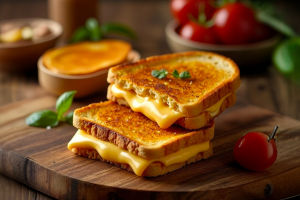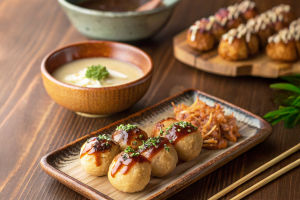Pasta primavera is a celebration of vegetables—bright, crisp, and tossed with pasta in a light sauce that lets the freshness shine. It’s a dish that feels effortless yet satisfying, perfect for when you want something comforting without being heavy.
For Lykkers who love seasonal flavor and a colorful plate, this guide walks you through the process of making a simple, vibrant pasta that feels like spring in every bite.
Part 1: How to Make Pasta Primavera
This version focuses on balance—tender pasta, crisp vegetables, and a light, garlicky olive oil sauce. It’s quick, customizable, and perfect for weeknights or casual dinner parties.
The Ingredients You’ll Need
(Serves 2–3)
Spaghetti, linguine, or penne – 200g
Olive oil – 2 tbsp
Garlic – 2 cloves, minced
Carrot – 1 medium (about 70g), julienned or thinly sliced
Zucchini – 1 small (about 100g), halved and sliced
Red bell pepper – 1 small (about 80g), sliced into strips
Cherry tomatoes – 100g, halved
Broccoli florets – 100g
Frozen peas – 50g
Salt – 1 tsp (plus more for pasta water)
Black pepper – to taste
Lemon juice – 1 tbsp
Grated parmesan-style cheese – 30g (optional)
Fresh basil or parsley – for garnish
Step-by-Step Process
Step 1: Cook the Pasta
Bring a large pot of salted water to a boil. Add your pasta and cook it until just al dente—it should still have a little bite. Before draining, scoop out a cup of pasta water and set it aside.
Step 2: Sauté the Vegetables
While the pasta is cooking, heat the olive oil in a large pan over medium heat. Add the garlic and let it sizzle gently for about 30 seconds. You’ll start with the firmer veggies first—add the carrot, zucchini, and bell pepper. Stir for 4–5 minutes until they begin to soften but still hold their shape.
Step 3: Add More Greens
Toss in the broccoli, peas, and cherry tomatoes. Stir everything together and let it cook for another 3–4 minutes. You want the broccoli tender and the tomatoes just starting to burst.
Step 4: Combine Pasta and Sauce
Now add the drained pasta right into the pan with the veggies. Drizzle in a bit of the reserved pasta water to loosen things up and create a light sauce. Add lemon juice, a pinch of salt, and plenty of black pepper. Toss everything well—you want the pasta glossy and the vegetables evenly distributed.
Step 5: Garnish and Serve
If you’re using cheese, sprinkle it in now and stir until it melts into the sauce. Finish with a handful of chopped basil or parsley and serve warm.
Part 2: Make It Your Own
Why Pasta Primavera Shines
It’s simple, colorful, and lets the vegetables take center stage. There’s no heavy sauce, just the freshness of the produce and a light lemony lift.
Swap and Add Ideas
This dish is a great canvas. Use asparagus, green beans, or spinach if that’s what you have. Want more protein? Add chickpeas, tofu, or cooked chicken. No spaghetti? Any pasta works—fusilli, shells, or even orzo.
Dairy-Free and Gluten-Free Options
Use your favorite plant-based cheese or skip it entirely—the lemon and herbs carry plenty of flavor. Gluten-free pasta works just as well—just be mindful of the cook time.
Storage and Leftovers
Pasta primavera stores well for 2–3 days. Keep it in an airtight container in the fridge. Reheat gently in a pan with a splash of water or olive oil to keep the texture just right.
Perfect Pairings
Serve it with a side of crusty bread, a crisp salad, or grilled vegetables. It also makes a great cold lunch the next day with an extra squeeze of lemon.
Pasta primavera is the kind of dish that reminds you how beautiful simplicity can be. With a handful of fresh vegetables, a little pasta, and some thoughtful seasoning, you get a vibrant, feel-good meal that’s as lovely to look at as it is to eat. So Lykkers, grab your favorite veggies, fire up the stove, and toss together something truly fresh. Ready to try a pesto version next? Let’s make it green and glorious.


